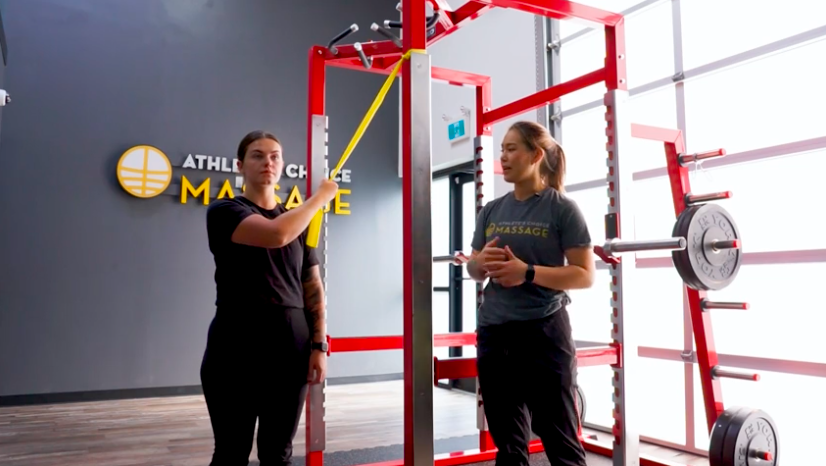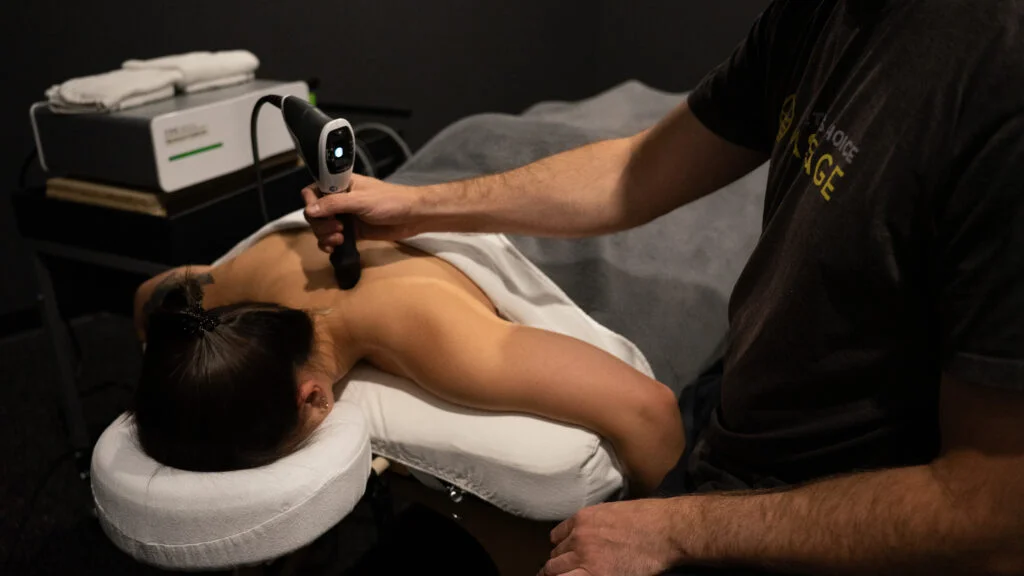Why Shoulder Mobility Matters More Than You Think
Shoulder pain is one of the most common complaints among active adults. Studies suggest that up to 26% of adults will experience shoulder discomfort at some point in their lives. For those in the greater Edmonton and Sherwood Park areas who are constantly on the move—whether it’s lifting weights, playing hockey, or just managing physically demanding jobs—shoulder health is essential. If your range of motion is limited, you risk injury, discomfort, and long-term restrictions in movement.
Whether you’re recovering from an injury or looking to stay ahead of potential issues, incorporating range of motion exercises into your routine is critical. This guide covers everything from active assisted range of motion to tips for avoiding overuse injuries.
Understanding Range of Motion (ROM) in the Shoulder
Your shoulder is one of the most mobile joints in your body, enabling a wide variety of movements like lifting, reaching, pushing, and pulling. However, that same mobility also makes it more prone to strains, impingements, and wear and tear.
Maintaining a healthy range of motion isn’t just about staying limber—it’s about preserving function, reducing pain, and preventing injuries like frozen shoulder or rotator cuff damage. That’s why targeted exercises are essential for both recovery and injury prevention.

Active vs Passive Exercises During Rehab
When it comes to shoulder rehabilitation, knowing the difference between exercise types matters.
- Passive exercises: These require no effort from the patient; the shoulder is moved by a therapist or device.
- Active exercises: The patient uses their own muscles to move the joint.
- Active assisted range of motion: These are a hybrid approach, where movement is initiated with help (from a therapist, pulley, or tool) but the patient still engages the muscles.
Each type plays a specific role at different stages of recovery.
When to Use Passive Range of Motion Exercises
Passive ROM exercises are ideal during the early stages of recovery when pain or inflammation limits your ability to move. They’re especially helpful after surgery or acute injuries when the shoulder needs to remain protected.
Examples of Passive Shoulder ROM Exercises
- Pendulum Swings – Lean forward slightly and let your arm dangle. Move it in small circles, side-to-side, and front to back.
- Wand Exercises – Use a stick or dowel to guide the injured arm through motions like forward raises or outward stretches.
- Wall Walks – Stand facing a wall and use your fingers to crawl your arm upward slowly.
These gentle movements help maintain joint flexibility without straining healing tissues.
Benefits of Active Assisted Range of Motion Exercises
Once pain and inflammation subside, active assisted range of motion exercises become key to building strength and control.
Popular Active Assisted Shoulder ROM Exercises
- Pulley Systems – Use an overhead pulley to lift your arm gently while seated.
- Towel Stretches – Hold a towel behind your back with both hands and gently pull to assist the upward movement of the lower hand.
- Sleeper Stretch – Lie on your affected side with your arm at a 90-degree angle. Use your opposite hand to gently push the forearm down.
These exercises support the transition to full active range of motion and reduce the risk of re-injury.

How Active Range of Motion Exercises Build Shoulder Health
Active range of motion exercises are essential for maintaining and improving shoulder strength once you’re ready for full movement without support. They help rebuild neuromuscular control, promote circulation, and improve coordination.
Examples Include
- Shoulder rolls
- Arm circles
- Overhead reaches
- Cross-body stretches
These exercises are also effective for preventing future issues, especially for athletes and physically active individuals.
Common Mistakes and Safety Tips
To avoid setbacks, keep the following in mind:
- Don’t rush progression. Begin with passive, move to active assisted range of motion, then to active exercises as tolerated.
- Never push through pain. A mild stretch is okay; sharp pain is not.
- Work with a professional. Especially if you’re recovering from surgery or a significant injury.
- Avoid overstretching, which can cause instability.
It’s also wise to combine these exercises with other treatments such as therapeutic massage in Sherwood Park to improve recovery and prevent tension buildup.
Pairing ROM Exercises with Professional Support
At Athlete’s Choice Massage in South Edmonton, a customized recovery plan may include modalities such as:
These treatments can complement your range of motion exercises and offer faster results.
Build Shoulder Resilience with the Right Routine
Improving shoulder mobility is a journey—not a race. By using the right type of exercise at the right time and listening to your body, you can regain function, reduce pain, and build a more resilient shoulder.
With the right approach and guidance, range of motion exercises can help you stay active, pain-free, and ready for anything life throws your way.





